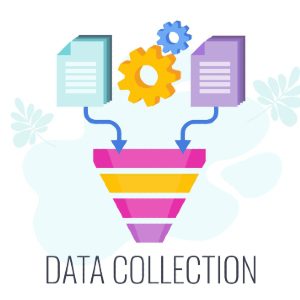 Florida Medicaid Transition to Procedural Terminology (CPT) Codes for Behavior Analysis
July 1, 2022
On November 10, 2021, AHCA communicated is converting the Behavior Analysis fee schedule from its current Healthcare Common Procedure Coding…
Florida Medicaid Transition to Procedural Terminology (CPT) Codes for Behavior Analysis
July 1, 2022
On November 10, 2021, AHCA communicated is converting the Behavior Analysis fee schedule from its current Healthcare Common Procedure Coding…
 Backup Client
March 25, 2022
Request backups of the entire client data in one single click to create snapshots. Gain peace of mind by having…
Backup Client
March 25, 2022
Request backups of the entire client data in one single click to create snapshots. Gain peace of mind by having…
 Charts
March 18, 2022
Office Puzzle offers the possibility to create charts with a powerful and fully customizable system while also providing a friendly…
Charts
March 18, 2022
Office Puzzle offers the possibility to create charts with a powerful and fully customizable system while also providing a friendly…
 Create client event with EVV
March 11, 2022
How to create an event/visit/session with EVV (Electronic Visit Verification). Including actual start and end times and GPS coordinates.
Create client event with EVV
March 11, 2022
How to create an event/visit/session with EVV (Electronic Visit Verification). Including actual start and end times and GPS coordinates.
 Link or Unlink events with documents
March 9, 2022
Follow these steps if you are missing some information in your documents that are coming from the events you already…
Link or Unlink events with documents
March 9, 2022
Follow these steps if you are missing some information in your documents that are coming from the events you already…
 On-site Data Collection
March 9, 2022
To avoid collecting data on a datasheet (a.k.a. piece of paper) and then transferring the data into an Electronic System,…
On-site Data Collection
March 9, 2022
To avoid collecting data on a datasheet (a.k.a. piece of paper) and then transferring the data into an Electronic System,…
 Datasheets for Data Collection
March 9, 2022
From our datasheets, you will be able to add the data collected for your client, as you would do it…
Datasheets for Data Collection
March 9, 2022
From our datasheets, you will be able to add the data collected for your client, as you would do it…
 Data Collection
March 9, 2022
Office Puzzle provides you with a detailed data collection system, with more than 15 data collection methods, making the difficult…
Data Collection
March 9, 2022
Office Puzzle provides you with a detailed data collection system, with more than 15 data collection methods, making the difficult…
 Create client event from calendar
March 9, 2022
Instructions on how to create an event from the calendar for a client. Please note this will create all required…
Create client event from calendar
March 9, 2022
Instructions on how to create an event from the calendar for a client. Please note this will create all required…
 Live Chat Support
January 4, 2022
You can reach us through your preferred channels: live chat from Monday to Friday, from 9:00 am to 5:00 pm…
Live Chat Support
January 4, 2022
You can reach us through your preferred channels: live chat from Monday to Friday, from 9:00 am to 5:00 pm…
 Custom Templates
January 4, 2022
A custom template is created from a previously established model, trying as much as possible to keep the formatting, fonts,…
Custom Templates
January 4, 2022
A custom template is created from a previously established model, trying as much as possible to keep the formatting, fonts,…
 Save user signature
January 4, 2022
Instructions on how to save your own user signature for later use, avoiding having to input the same signature over…
Save user signature
January 4, 2022
Instructions on how to save your own user signature for later use, avoiding having to input the same signature over…
 Florida Medicaid Transition to Procedural Terminology (CPT) Codes for Behavior Analysis
July 1, 2022
On November 10, 2021, AHCA communicated is converting the Behavior Analysis fee schedule from its current Healthcare Common Procedure Coding…
Florida Medicaid Transition to Procedural Terminology (CPT) Codes for Behavior Analysis
July 1, 2022
On November 10, 2021, AHCA communicated is converting the Behavior Analysis fee schedule from its current Healthcare Common Procedure Coding…
 Backup Client
March 25, 2022
Request backups of the entire client data in one single click to create snapshots. Gain peace of mind by having…
Backup Client
March 25, 2022
Request backups of the entire client data in one single click to create snapshots. Gain peace of mind by having…
 Charts
March 18, 2022
Office Puzzle offers the possibility to create charts with a powerful and fully customizable system while also providing a friendly…
Charts
March 18, 2022
Office Puzzle offers the possibility to create charts with a powerful and fully customizable system while also providing a friendly…
 Create client event with EVV
March 11, 2022
How to create an event/visit/session with EVV (Electronic Visit Verification). Including actual start and end times and GPS coordinates.
Create client event with EVV
March 11, 2022
How to create an event/visit/session with EVV (Electronic Visit Verification). Including actual start and end times and GPS coordinates.
 Link or Unlink events with documents
March 9, 2022
Follow these steps if you are missing some information in your documents that are coming from the events you already…
Link or Unlink events with documents
March 9, 2022
Follow these steps if you are missing some information in your documents that are coming from the events you already…
 On-site Data Collection
March 9, 2022
To avoid collecting data on a datasheet (a.k.a. piece of paper) and then transferring the data into an Electronic System,…
On-site Data Collection
March 9, 2022
To avoid collecting data on a datasheet (a.k.a. piece of paper) and then transferring the data into an Electronic System,…
 Datasheets for Data Collection
March 9, 2022
From our datasheets, you will be able to add the data collected for your client, as you would do it…
Datasheets for Data Collection
March 9, 2022
From our datasheets, you will be able to add the data collected for your client, as you would do it…
 Data Collection
March 9, 2022
Office Puzzle provides you with a detailed data collection system, with more than 15 data collection methods, making the difficult…
Data Collection
March 9, 2022
Office Puzzle provides you with a detailed data collection system, with more than 15 data collection methods, making the difficult…
 Create client event from calendar
March 9, 2022
Instructions on how to create an event from the calendar for a client. Please note this will create all required…
Create client event from calendar
March 9, 2022
Instructions on how to create an event from the calendar for a client. Please note this will create all required…
 Live Chat Support
January 4, 2022
You can reach us through your preferred channels: live chat from Monday to Friday, from 9:00 am to 5:00 pm…
Live Chat Support
January 4, 2022
You can reach us through your preferred channels: live chat from Monday to Friday, from 9:00 am to 5:00 pm…
 Custom Templates
January 4, 2022
A custom template is created from a previously established model, trying as much as possible to keep the formatting, fonts,…
Custom Templates
January 4, 2022
A custom template is created from a previously established model, trying as much as possible to keep the formatting, fonts,…
 Save user signature
January 4, 2022
Instructions on how to save your own user signature for later use, avoiding having to input the same signature over…
Save user signature
January 4, 2022
Instructions on how to save your own user signature for later use, avoiding having to input the same signature over…